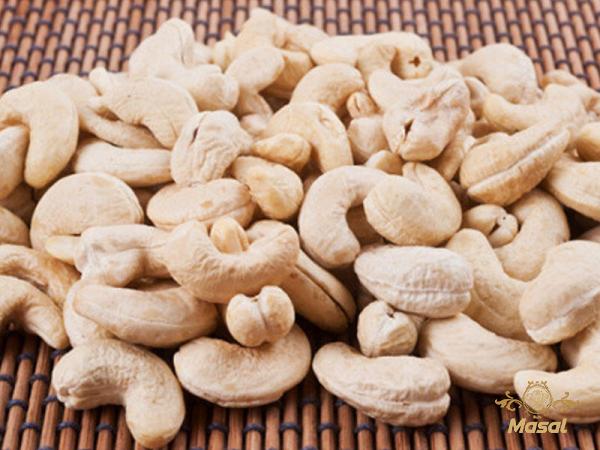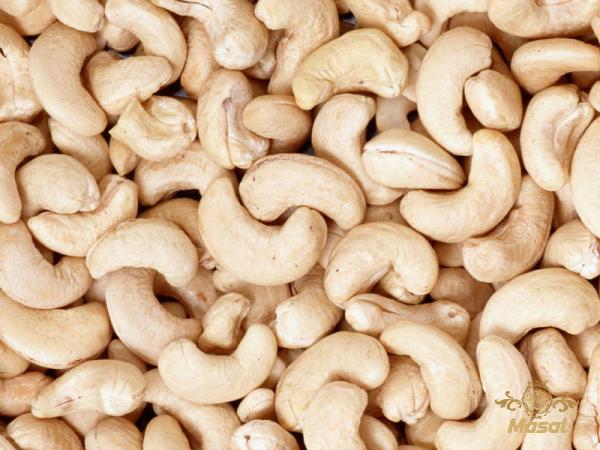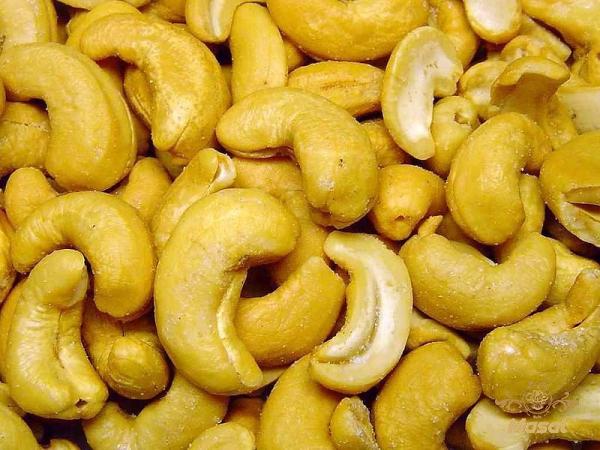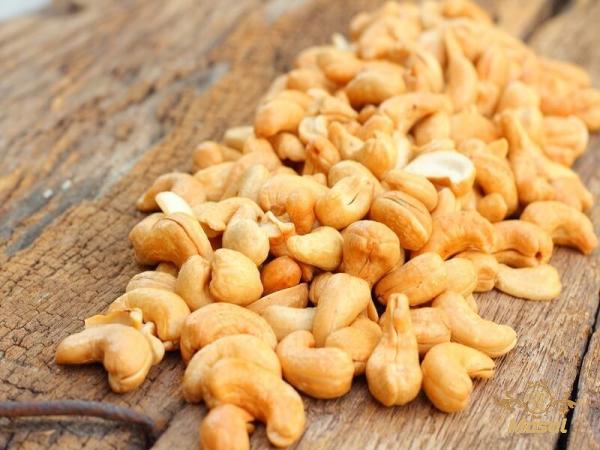The cashew nut industry plays a crucial role in the state of Odisha, India. Odisha is one of the major cashew growing states, contributing significantly to the overall cashew production in the country. This summary provides an overview of the cashew nut industry in Odisha, focusing on its production, challenges faced by the sector, and the potential opportunities for growth. 1. Production: Odisha has favorable agro-climatic conditions suitable for cashew cultivation, with regions such as Ganjam, Puri, and Balasore being known for their cashew plantations. The state has witnessed significant growth in cashew plantations over the years, contributing to the state’s economy and serving as a source of livelihood for many farmers. Cashew production in Odisha is primarily carried out through small-scale farming, with farmers owning small landholdings. The state offers ideal conditions for cashew cultivation, including well-distributed rainfall, suitable temperature, and soil fertility. The production process involves grafting and planting cashew saplings, followed by regular maintenance of the cashew plantations. 2. Challenges: Despite the potential for cashew production in Odisha, the industry faces several challenges that hinder its growth and development. These challenges include: a. Low productivity: The productivity of cashew plantations in Odisha remains relatively low compared to other cashew-growing regions in the country. Factors contributing to this low productivity include outdated farming practices, lack of access to modern technology, and limited awareness about scientific cultivation techniques. b. Lack of processing facilities: Odisha is lacking in modern cashew processing facilities. This leads to a significant portion of the harvested cashew nuts being sold as raw products, resulting in lower value addition. The absence of processing facilities also limits employment opportunities within the state and reduces the overall profitability of the sector. c. Inadequate market linkages: Limited access to established markets is another challenge faced by the cashew nut industry in Odisha. Farmers often struggle to find reliable buyers for their produce, leading to price fluctuations and inconsistent demand. The lack of organized market linkages hampers the sector’s growth potential. d. Pests and diseases: Cashew plantations in Odisha are prone to various pests and diseases, including stem and root rot, leaf and nut blight, and scale insects. These issues affect the overall yield and quality of cashew nuts, leading to financial losses for farmers. 3. Opportunities: Despite the challenges, the cashew nut industry in Odisha has several opportunities for growth and development. These opportunities include: a. Improved farming practices: Promoting the adoption of modern farming techniques and providing training programs to farmers can significantly enhance productivity. Encouraging the use of high-yielding cashew varieties, efficient irrigation systems, and organic farming practices can lead to increased yields and improved quality. b. Strengthening processing facilities: Investing in modern cashew processing facilities within the state will increase value addition to the cashew nuts. This move will provide employment opportunities and encourage farmers to sell processed cashews, leading to higher profitability. Government support and private investments can play a vital role in establishing such facilities. c. Market diversification and promotion: Expanding domestic and international market linkages can help address the issue of adequate demand for cashew nuts. Developing export-oriented strategies, establishing marketing cooperatives, and participating in trade fairs and exhibitions can create awareness and attract potential buyers. d. Research and development: Increased investment in research and development of cashew farming practices can lead to the development of resilient cashew varieties, better pest management techniques, and optimal cultivation practices. Collaborations with agricultural research institutes and universities can accelerate this process. Conclusion: The cashew nut industry in Odisha holds significant potential for growth and development. By addressing the existing challenges and capitalizing on the available opportunities, the state can enhance cashew production, increase value addition, and contribute to the socio-economic well-being of its farmers. Government support, private investments, and research and development initiatives are crucial to realizing the true potential of the cashew nut industry in Odisha.

nut
 I. Introduction to the Cashew Nut Industry in Odisha The cashew nut industry in Odisha, India, holds immense potential for growth and development. This section provides an overview of the cashew nut industry and its significance in the state’s economy. With favorable agro-climatic conditions and a high concentration of cashew plantations, Odisha plays a vital role in cashew production in the country. II. Odisha’s Prominent Cashew Growing Regions In this section, we focus on the key regions in Odisha known for cashew cultivation. These include Ganjam, Puri, and Balasore, where a significant number of cashew plantations are located. These regions benefit from the state’s favorable agro-climatic conditions, including well-distributed rainfall, suitable temperature, and fertile soil, contributing to the state’s high cashew production. III. Overview of Cashew Production Process in Odisha This section provides insights into the cashew production process followed by farmers in Odisha. It includes grafting and planting cashew saplings, maintenance of cashew plantations, and harvesting techniques. Understanding the production process is essential to ensure improved productivity and high-quality cashew nuts. IV. Challenges Faced by the Cashew Nut Industry in Odisha Despite its potential, the cashew nut industry in Odisha faces several challenges. This section discusses the challenges, such as low productivity, lack of processing facilities, and inadequate market linkages. Additionally, pests and diseases also pose a significant threat to cashew plantations in the region, impacting yields and quality. V. Low Productivity in Odisha’s Cashew Plantations This section dives deeper into the factors contributing to low productivity in cashew plantations. Outdated farming practices, limited access to modern technology, and a lack of awareness about scientific cultivation techniques hinder the industry’s growth potential. Strategies to improve productivity, including the adoption of modern farming techniques, high-yielding cashew varieties, and organic farming practices, can address this issue.
I. Introduction to the Cashew Nut Industry in Odisha The cashew nut industry in Odisha, India, holds immense potential for growth and development. This section provides an overview of the cashew nut industry and its significance in the state’s economy. With favorable agro-climatic conditions and a high concentration of cashew plantations, Odisha plays a vital role in cashew production in the country. II. Odisha’s Prominent Cashew Growing Regions In this section, we focus on the key regions in Odisha known for cashew cultivation. These include Ganjam, Puri, and Balasore, where a significant number of cashew plantations are located. These regions benefit from the state’s favorable agro-climatic conditions, including well-distributed rainfall, suitable temperature, and fertile soil, contributing to the state’s high cashew production. III. Overview of Cashew Production Process in Odisha This section provides insights into the cashew production process followed by farmers in Odisha. It includes grafting and planting cashew saplings, maintenance of cashew plantations, and harvesting techniques. Understanding the production process is essential to ensure improved productivity and high-quality cashew nuts. IV. Challenges Faced by the Cashew Nut Industry in Odisha Despite its potential, the cashew nut industry in Odisha faces several challenges. This section discusses the challenges, such as low productivity, lack of processing facilities, and inadequate market linkages. Additionally, pests and diseases also pose a significant threat to cashew plantations in the region, impacting yields and quality. V. Low Productivity in Odisha’s Cashew Plantations This section dives deeper into the factors contributing to low productivity in cashew plantations. Outdated farming practices, limited access to modern technology, and a lack of awareness about scientific cultivation techniques hinder the industry’s growth potential. Strategies to improve productivity, including the adoption of modern farming techniques, high-yielding cashew varieties, and organic farming practices, can address this issue.
Specifications of nut
 VI. Lack of Processing Facilities and Value Addition To maximize profitability, it is crucial to have modern processing facilities for cashew nuts in Odisha. This section explores the lack of processing facilities and its impact on value addition. Establishing modern processing units within the state will not only add value to the cashew nuts but also generate employment opportunities and boost the overall profitability of the industry. VII. Inadequate Market Linkages and Price Fluctuations Access to reliable markets is essential for the growth and sustainability of the cashew nut industry in Odisha. The absence of organized market linkages leads to price fluctuations and inconsistent demand, making it challenging for farmers to sell their produce. This section suggests strategies to diversify and strengthen market linkages, such as developing export-oriented strategies, establishing marketing cooperatives, and participating in trade fairs and exhibitions. VIII. Pest and Disease Management in Cashew Plantations Pests and diseases pose a significant threat to cashew plantations in Odisha. This section discusses the common pests and diseases affecting cashew plantations, including stem and root rot, leaf and nut blight, and scale insects. Implementing integrated pest management techniques and investing in research and development can help farmers combat these issues effectively. IX. Opportunities for Growth in Odisha’s Cashew Nut Industry Despite the challenges, the cashew nut industry in Odisha has several opportunities for growth and development. This section highlights the potential opportunities, such as improved farming practices, strengthening of processing facilities, market diversification and promotion, and increased investment in research and development.
VI. Lack of Processing Facilities and Value Addition To maximize profitability, it is crucial to have modern processing facilities for cashew nuts in Odisha. This section explores the lack of processing facilities and its impact on value addition. Establishing modern processing units within the state will not only add value to the cashew nuts but also generate employment opportunities and boost the overall profitability of the industry. VII. Inadequate Market Linkages and Price Fluctuations Access to reliable markets is essential for the growth and sustainability of the cashew nut industry in Odisha. The absence of organized market linkages leads to price fluctuations and inconsistent demand, making it challenging for farmers to sell their produce. This section suggests strategies to diversify and strengthen market linkages, such as developing export-oriented strategies, establishing marketing cooperatives, and participating in trade fairs and exhibitions. VIII. Pest and Disease Management in Cashew Plantations Pests and diseases pose a significant threat to cashew plantations in Odisha. This section discusses the common pests and diseases affecting cashew plantations, including stem and root rot, leaf and nut blight, and scale insects. Implementing integrated pest management techniques and investing in research and development can help farmers combat these issues effectively. IX. Opportunities for Growth in Odisha’s Cashew Nut Industry Despite the challenges, the cashew nut industry in Odisha has several opportunities for growth and development. This section highlights the potential opportunities, such as improved farming practices, strengthening of processing facilities, market diversification and promotion, and increased investment in research and development.
buy nut
 X. Improved Farming Practices and Increased Productivity In this section, we delve deeper into the importance of improved farming practices and how they can enhance cashew productivity in Odisha. Promoting the adoption of modern techniques, providing training programs to farmers, and encouraging sustainable agricultural practices can lead to increased yields and improved quality of cashew nuts. XI. Strengthening Processing Facilities and Value Addition Investing in modern cashew processing facilities within Odisha is crucial to maximize value addition. This section emphasizes the need for government support and private investment to establish processing units. Developments in processing infrastructure will enable farmers to sell processed cashews, increasing profitability and creating employment opportunities within the state. XII. Market Diversification and Promotion Strategies Expanding domestic and international market linkages is integral to the growth of the cashew nut industry in Odisha. This section explores market diversification and promotion strategies, such as developing export-oriented initiatives, establishing marketing cooperatives, and participating in trade fairs and exhibitions. These efforts will create awareness about Odisha’s cashews and attract potential buyers, boosting demand and market competitiveness. Conclusion: The cashew nut industry in Odisha, though facing challenges, holds immense potential for growth and development. By addressing the challenges and capitalizing on opportunities, such as improved farming practices, strengthened processing facilities, and market diversification, Odisha can foster the growth of its cashew nut industry. Government support, private investments, and research and development initiatives are vital to realizing its true potential and contributing to the state’s economy and the livelihoods of its farmers.
X. Improved Farming Practices and Increased Productivity In this section, we delve deeper into the importance of improved farming practices and how they can enhance cashew productivity in Odisha. Promoting the adoption of modern techniques, providing training programs to farmers, and encouraging sustainable agricultural practices can lead to increased yields and improved quality of cashew nuts. XI. Strengthening Processing Facilities and Value Addition Investing in modern cashew processing facilities within Odisha is crucial to maximize value addition. This section emphasizes the need for government support and private investment to establish processing units. Developments in processing infrastructure will enable farmers to sell processed cashews, increasing profitability and creating employment opportunities within the state. XII. Market Diversification and Promotion Strategies Expanding domestic and international market linkages is integral to the growth of the cashew nut industry in Odisha. This section explores market diversification and promotion strategies, such as developing export-oriented initiatives, establishing marketing cooperatives, and participating in trade fairs and exhibitions. These efforts will create awareness about Odisha’s cashews and attract potential buyers, boosting demand and market competitiveness. Conclusion: The cashew nut industry in Odisha, though facing challenges, holds immense potential for growth and development. By addressing the challenges and capitalizing on opportunities, such as improved farming practices, strengthened processing facilities, and market diversification, Odisha can foster the growth of its cashew nut industry. Government support, private investments, and research and development initiatives are vital to realizing its true potential and contributing to the state’s economy and the livelihoods of its farmers.










Your comment submitted.